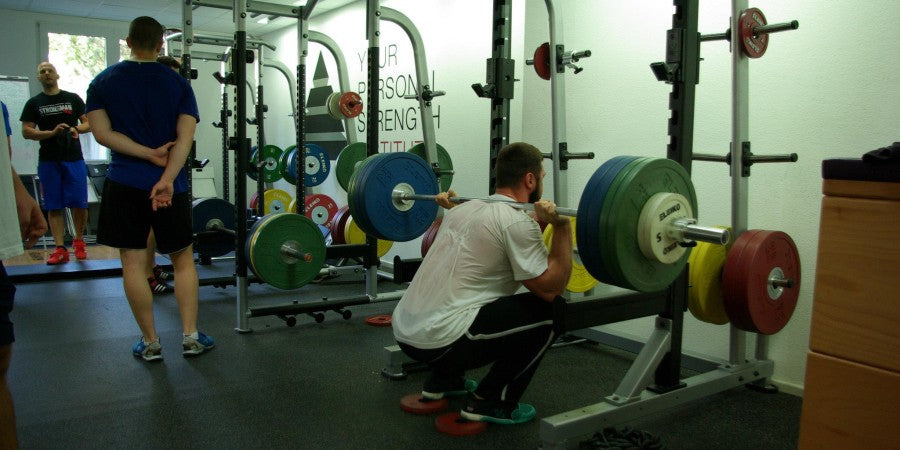There are a number of warm-up exercises that are intended to prepare the trainee for the upcoming load in strength training. There are no cardio machines at YPSI and our clients do not use foam rollers for general warm ups. Since strength training involves specific, precisely defined movement patterns and loads, our customers also warm up specifically for the upcoming movement patterns and loads.
Warming up for strength training using the example of barbell squats
For barbell squats, the best way to warm up is with barbell squats. The reason: no other exercise will prepare your body and your nervous system better for the stress that occurs during a squat than a squat - with gradually increasing weight, of course.
The goal is mobilization over the entire range of motion of the exercise and activation of the central nervous system (CNS). The cardiovascular component is not critical in strength training and is activated during the warm-up process anyway, so it is neither necessary nor useful to do an additional cardiovascular warm-up.
Because the CNS is responsible for activating the muscle and is the factor that we mainly want to train because it tells the muscle what to do. The CNS is activated with reps under 6 over the course of 1-6 sets, depending on the reps and target weight of the first working set.
The following are examples of the warm-up process for an intermediate trainee and for a very advanced trainee:
Intermediate, first work set squat target weight is 80 kg x 5 reps:
Warm-up Set 1 : 20kg x 6
Warm-up Set 2: 40kg x 4
Warm-up set 3: 60 kg x 2
Working set 1: 80 kg x 5
While the first warm-up set with the bar is used for mobilization, sets 2 and 3 activate the nervous system without tiring it or taxing muscle glycogen stores like high reps would.
Intermediate lifter, target 1st work set squat is 400 lbs x 2 reps:
Warm-up Set 1: 50kg x 6
Warm-up Set 2: 70kg x 4
Warm-up set 3: 90 kg x 3
Warm-up set 4: 110 kg x 2
Warm-up set 5: 130 kg x 2
Warm-up set 6: 150 kg x 1
Working set 1: 180 kg x 2
Such an advanced lifter can start with heavier weights, but due to the high training weight and low reps, they will need more warm-up sets to activate their nervous system.
The pace and range of motion for the warm-up sets are the same as the work sets.
Optimal warm-up not only reduces injuries, it also increases performance and thus the training effect.
Good luck with the warm-up!
Image: Personal trainer Dennis Unic at the Before'n'After Bootcamp seminar at LH squats with 161kg - after a successful warm-up

